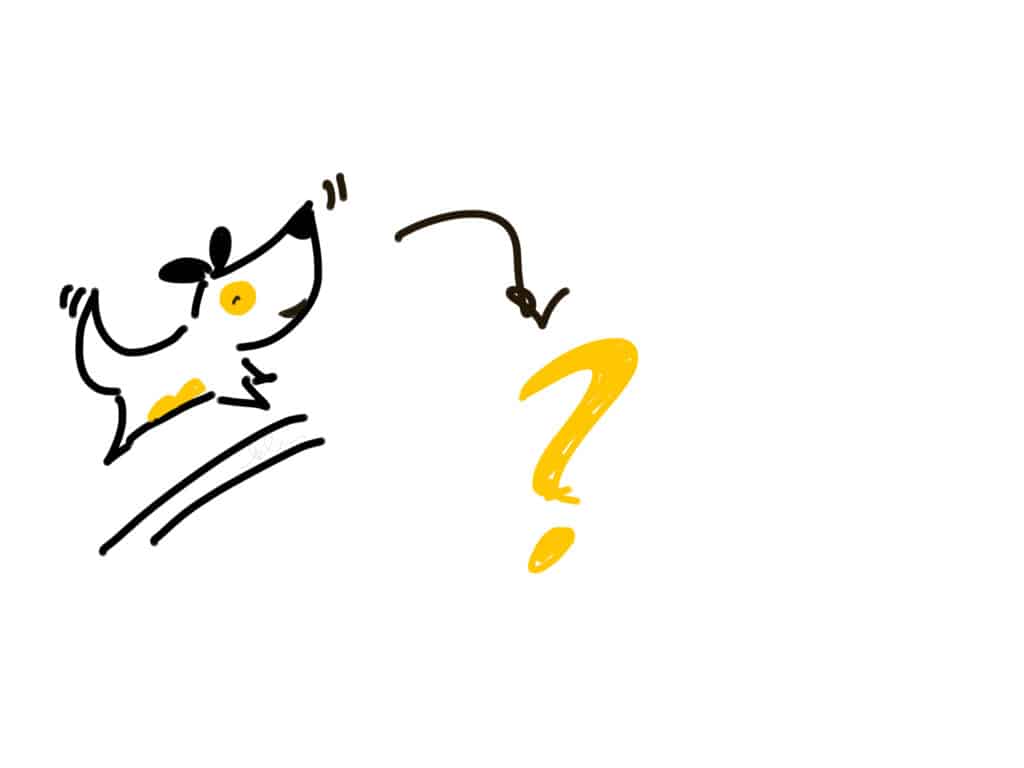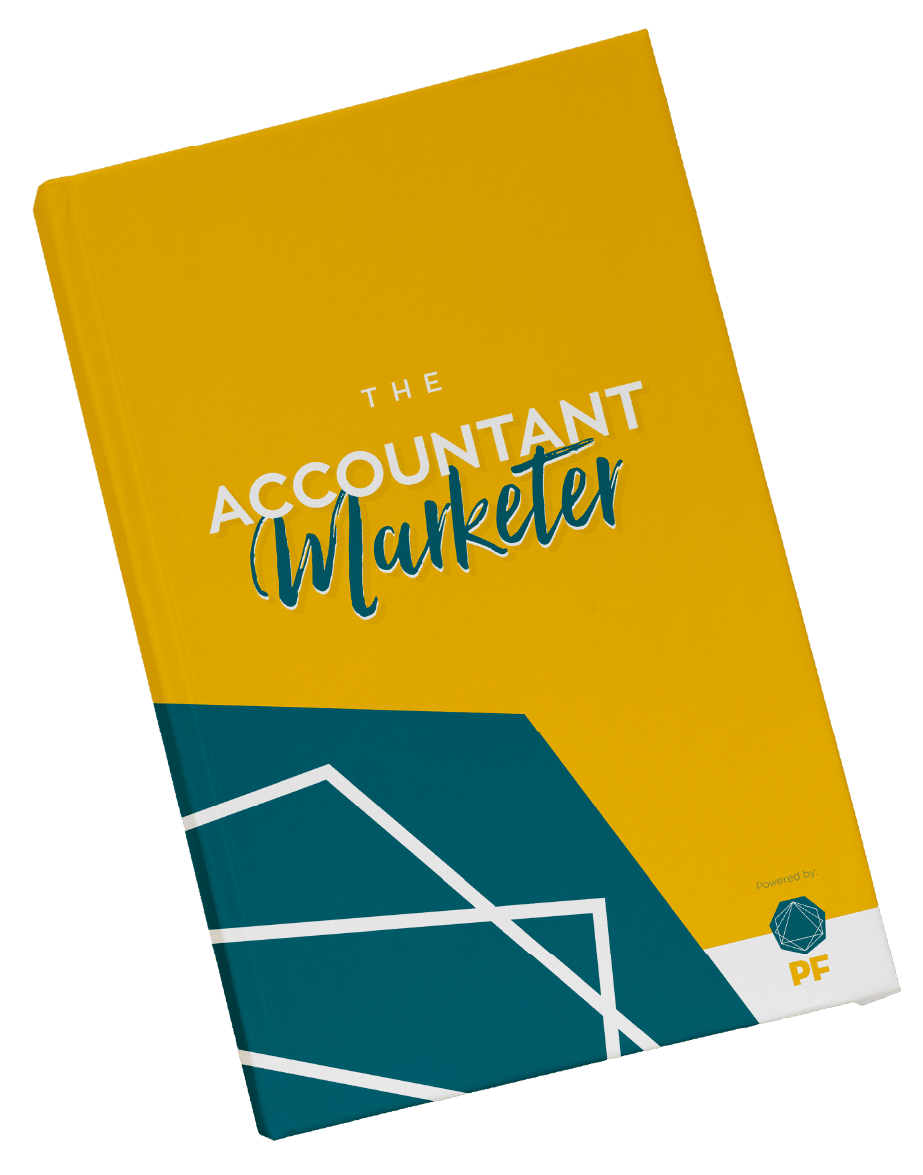“Okay I’m going to create this PDF guide…but obviously I’ll also need some automation and follow up emails for everyone who downloads it, so I’d better get started on that first!”
Our entrepreneur-brain is rigged to think very optimistically about our Great New Idea.
If we think of creating a PDF guide (or training course or masterclass), already in our mind we’re imagining the thousands of people literally begging to download it. We imagine casually mentioning in a LinkedIn post that this is coming, and in our mind’s eye we see ourselves, hundreds of comments later, literally drowning in a sea of leads!!
This is a good quality. A strong quality. We need this optimistic spirit to drive us forward and be a cheering section for every new idea we have.
Unfortunately that cheering section has little to no ability to distinguish between all the Great New Ideas, and will respond exactly the same to every single one.
Sort of like a dog welcoming you home after you’ve been away. I remember in my auditing days we’d travel for 4 days a week, and on Mondays I’d pick up one of my team members and on Thursday evening drop him off. He always said goodbye to his adorable little Jack Russell dog, who would stare out the window sadly as we drove off. On Thursdays when he’d open the front door the dog was there, writhing with happiness and joy, welcoming him home after his long voyage.
One Monday morning he got in the car, and we drove off, and he suddenly said “Oh my goodness, I’ve forgotten my laptop!” We turned around and when he opened the door, there was the dog, literally spinning circles of happiness. My colleague got his laptop and locked the door and came back to the car, and there was his dog, staring sadly as we drove away. Again.
“I love that he misses me so much – but it’s the exact same response whether I’m gone for three minutes, or three days!” he said.
Your entrepreneurial brain works in the same way. It literally spins round with happiness until you’re dizzy whether you have a new idea for a PDF guide, or a video training series, or a speaking engagement, or a new company, or a new hire.
We use this quality and it motivates us to do the Great New Things – even when a small portion of our brain recognises that not every Thing will work out.
It’s a good quality. But it can also give us a hell of a lot more work to do in the early days.
Because this enthusiasm is based on the Idea itself…not on checking with real human people (our audience) how they will feel about the Idea.
It will lead us to spending hours, days, even months creating an automation process for our new guide…when no one has downloaded the guide yet. No one even knows about it. Perhaps no one has even asked for it. “That’s okay,” says our excited little Jack-Russell brain. “Once they see it, they’ll love it! They have to!”
And then we realise our guide needs to be properly designed. Which reminds us we need to get our logo refreshed. Maybe even consider a new name for the business. Is this one right? After all, so many people in this industry use blue and grey. Is it time for purple and orange? We start listening to TED talks and podcasts on design and colour, and stay up late at night trying out new logos in different colours.
After all, we don’t want to half-ass it, right? This guide is going to bring us so many leads. That guy on LinkedIn who gets all the comments and views told us this was a great way to get new business. Okay so we’ve got a new logo and new colours and a designer is putting it together….
…oh. The content. Okay we’d better start writing the content. Okay. Hands to keyboard. It was going to be something about…cash flow? Sure, cash flow. Every business owner worries about that, right? Okay. Grab some content from ChatGPT. Got it. Hmm, this sort of sounds like everything else I’ve ever read on cash flow. Well, mine will be better designed so that will help people download it. Maybe I need to record a video. A series of videos. A training programme! That’s it!!
And the Jack-Russell brain spins around again and we’re off, creating a YouTube channel and researching what a good thumbnail is for videos so we can get more views.
There’s not one single aspect of this which isn’t a good idea to consider.
But the one which needs to rise above all is, “Do I have the message right?”
After all, if the worries and fears my ideal client are facing are front and centre, and I provide something which relieves those fears or helps them feel less alone, it doesn’t matter if it’s a beautifully designed PDF guide, or a Google doc. Or if my videos are 90 second insta reels or ten-minute, professionally recorded videos done in a studio.
The message is what matters.
That’s why some people can publish an entire book in a few months, and although it’s not the most beautifully designed thing or the book cover is fairly generic or it’s not even that well-written, loads of people buy it and read it and appreciate it and put its principles into action.
Or they mention in a LinkedIn post that they’re thinking of building a community group or a mastermind on this particular topic and within minutes they do have those hundreds of comments, everybody wanting in.
They got the audience right, and the message right, and didn’t stop to worry about every single detail of design or automation.
They still have the Jack-Russell excitement we have: but they took the fastest, most efficient way to the goal. The Minimum Viable Marketing.
Minimum Viable Marketing (MVM – I just made that acronym up and already my brain is imagining that trademarked and maybe it needs to be a book too and there’s a whole—oh. Okay. Right. Back to the message. MVM) means you focus in the early days, in the tester days, on those two things: the audience, and the message.
Do you know who you are talking to? And do you know what they want or need?
Because here’s the thing. If you know both of those things, and you can clearly articulate them, it doesn’t matter a whole lot if it’s a guide or a video series or a live workshop or a community group. It matters that you’re talking to the people who need this, and listening to what they’re saying or asking for, and letting them help guide the excited new ideas.
So whatever Brilliant New Brainwave has hit your mind this week – and you’ve probably had a few – celebrate it! Get excited, absolutely! And then talk to a few people. The kind of people you hope will love your Idea. Pick up the phone, drop them a text, send a DM. And focus on the issue or motivation rather than your perfect solution, first. “Hey, I was thinking about this issue. Does that come up sometimes for you?”
If all the answers are “yea, I guess so, sort of” or “maybe” or even no-reply, you might not have the message right yet. And you have the opportunity to talk to those who do reply and listen to what’s bothering them (or exciting them). “Oh, I was thinking it was this, but it sounds like you’re saying maybe this?”
When you hit the right message, you’ll know. You will get “oh my word, YES, I wish there was something for that”. Or “yea I was literally just telling my business partner about that and she felt the same”. That’s when you can float one of your Great Ideas. If I were to run a mastermind on this would you come? If I was going to share some content about it would you prefer a written guide or a video series? And let them play with it, too.
Make sure you talk to more than one person, too. Because our Great Ideas do usually come from thinking about the person, the human, the issue. The problem is we can get all excited after talking to one person, and our entrepreneurial brain immediately expands that to every human alive, and then we’re off and running before we’ve even paused to think. Go, ready, set.
So this week, whatever amazing new idea you have, don’t feel like you have to put the dimmer switch on it. Just channel that energy into actually talking to the kinds of people you’d love to have connected to it, and see where it takes you.
I look forward to hearing how it goes!
Here’s what I’d love to hear from you this week:
What’s your current Great New Idea?



